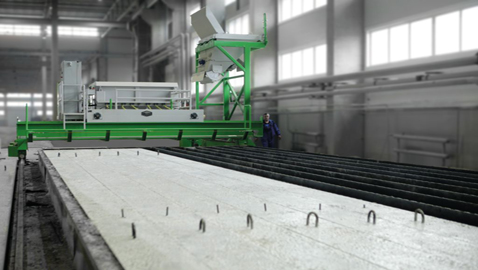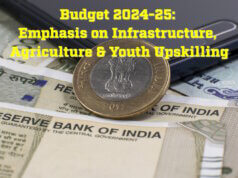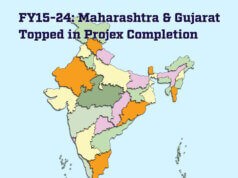 The India market has a lot of potential to become a major global market
The India market has a lot of potential to become a major global market for precast technology and we are confident that in the coming years every state will have 15-20 precast plants, notes Chander Dutta, Managing Director, Elematic India Pvt. Ltd, the global technology and market leader in precast concrete technology for residential and non-residential buildings.
for precast technology and we are confident that in the coming years every state will have 15-20 precast plants, notes Chander Dutta, Managing Director, Elematic India Pvt. Ltd, the global technology and market leader in precast concrete technology for residential and non-residential buildings.
Year 2015 looks to be a good year in construction. There is a huge demand of residential units at present in India and this will continue.
However, this demand cannot be satisfied without using modern construction technology. Precast technology is gradually being adopted by a lot of developers, builders and contractors in India because of obvious advantage in terms of speed, quality and cost of the construction.
India is also going through rapid urbanisation and this has created a huge demand for affordable housing segment which cannot be met through conventional construction and hence modernisation of construction industry has to take place.
There is also a shortage of skilled manpower and increase in their cost, which leads to most of the developers facing difficulties in finishing their projects on time.
Elematic manufactures moulds and machinery, which are used to produce reinforced or unreinforced concrete elements in the factory environment. Precast plants are customised as per the level of automation and production capacity and customer needs. Most of our plants are tailor made.
End-to-end solutions
Our company supplies end-to-end solutions to precasters from initial consultation, machinery supply, structural design of buildings, and training for production and installation of precast elements. Elematic’s technology is very efficient and helps in achieving precast construction advantages in terms of speed, quality and cost.
We are getting a huge number of queries on a monthly basis, which shows that awareness is spreading in India and people are interested in implementing the technology.
It has not always been so. Five years back there was only one precast technology supplier in India — Elematic.
Cost of labour, availability of raw materials and sizes of the projects were manageable with conventional technology and hence developers were not willing to adopt modern precast construction technologies. There was also a lack of knowledge base about precast construction and no exposure to technology.
Fast forward to 2015, and there is a huge shortage of skilled labour, high input costs, strict project delivery time which has forced the developers to think for alternate technologies and building methods such as precast technology.
As a result, there are a number of precast players in the market. Most of the states in India are approving precast technology to be implemented in affordable housing segment which will further give boost to precast technology. Today, there are around 30 precast plants setups so far in India and half of them are set up by Elematic.
India is pro-technology
People in India have always been pro-technology, and fast adopters to any technology introduced in any sector. Construction is no exception.
Big developers and contractors like Amrapali, Purvankara, Brigade and BG Shirke are constructing millions of sqft in a year by precast technology and a lot of others are showing interest and taking steps to implement precast technology.
They evaluate the advantage and continue to use it. If we talk about construction sector, there has been a lot of technology use in cast in-situ construction; for e.g. use of ready mix concrete, automation in cutting and bending steel, usage of fast form work etc. Almost every developer/contractor has implemented some form of modern technology in their projects.
The process of standardisation is already happening and various bodies are working together to develop Precast Handbook and Elematic is also playing a key role in this. Gradually standardisation of precast construction will happen as number of precast plants and projects keep increasing.
Precast technology has been used in Finland successfully for decades. In 1960s, there was rapid urbanisation in the country and huge numbers of people were moving to cities. Thus, lots of houses were needed to be constructed quickly. In addition, due to climatic conditions in Finland, the building skeleton had to be ready within six-eight months and these conditions pushed the Finns to develop the modern precast technology where all the elements were produced in the factory environment and could be installed in a short time at site.
Today, a small country like Finland with a population of just over five million people has about 100 precast plants. We are confident that India we will not take long to reach and surpass that number.
However, for the technology to truly take off, the Indian government has to provide favourable tax benefits to developers to implement modern technologies.
In addition, there is currently high custom duty for importing technology from foreign countries. Custom duty can be anywhere from 25-30 per cent which is a burden on the initial capex of the developers. Additionally, when precast element goes to a site from stabilised precast factory, as it is the cost of element goes up by around 20 per cent because of existing taxes and duties.
Despite the custom duties, the future of precast technology looks bright on India. We are confident that in the coming years every state will have 15-20 precast plants.
There is definitely a lot potential in India market to become a major global market for precast technology. A few good examples will set the pace right and there won’t be any looking back then.











